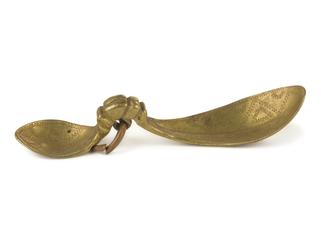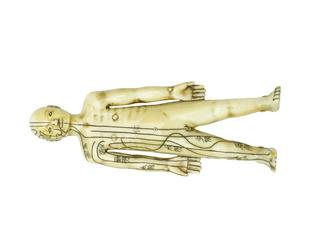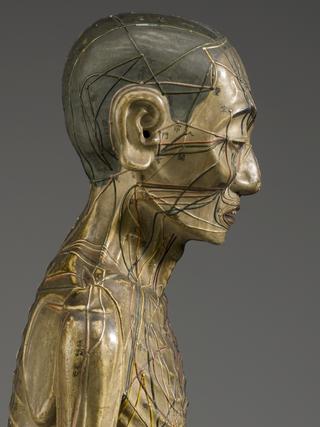


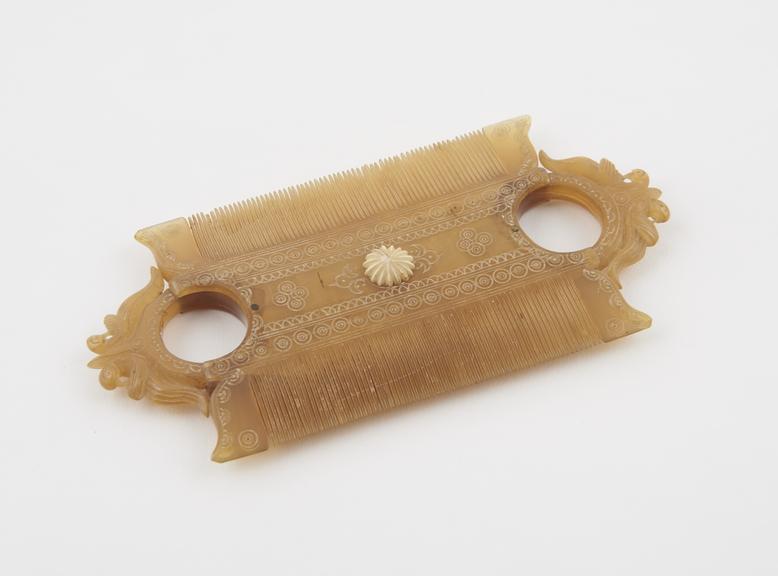
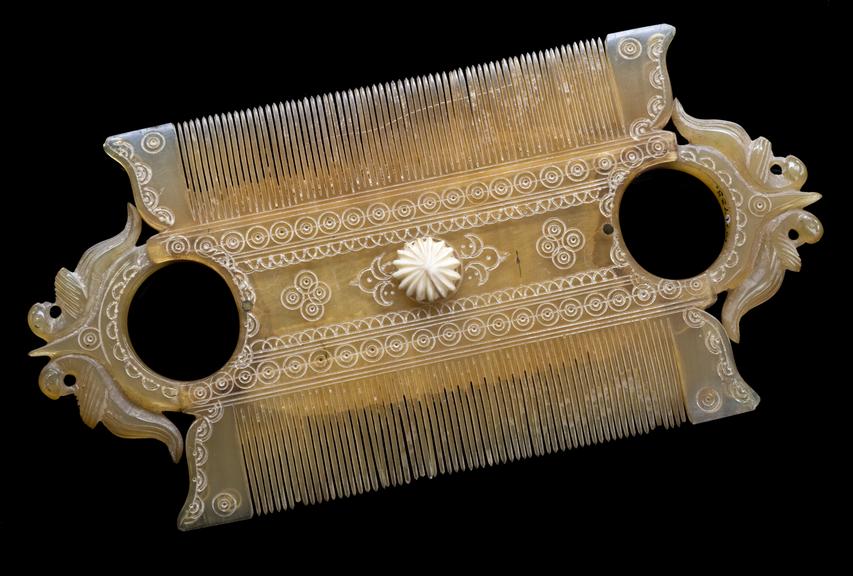
Double lice comb with two circular grips, incised and carved decoration horn, Indian, 1801-1900
Head lice are passed by direct contact from person to person or by sharing brushes, combs and hats. They cause discomfort and annoyance, but have also been associated with the spread of disease. Some, such as typhus, are potentially deadly. Lice and their eggs can be removed from human hair using combs like this. Carved from horn, it is decorated with two circular finger grips and has a double row of very fine teeth. The comb was made in India in the 1800s.
It differs little from combs today. Head lice were common in Britain in the 1700s. Many men and women often shaved their heads to prevent head lice and remove the need to wash the hair. They preferred wearing wigs.
Details
- Category:
- Asian Medicine
- Collection:
- Sir Henry Wellcome's Museum Collection
- Object Number:
- A171733
- Measurements:
-
overall: 70 mm x 145 mm x 12 mm, .04kg
- type:
- comb - grooming tool
- credit:
- Foster


